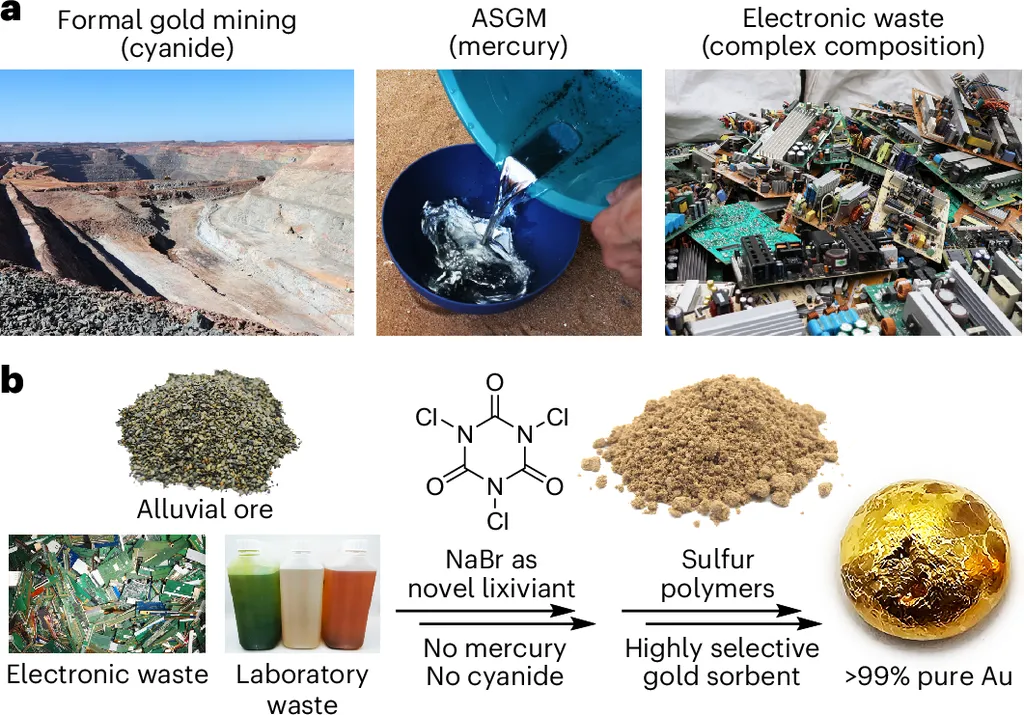In an era where sustainability is no longer a choice but a necessity, researchers are turning to industrial solid wastes (ISWs) as a goldmine for innovative solutions. A recent study led by Saeed Bozorgmehr Nia from the Department of Civil, Construction, and Environmental Engineering at Iowa State University has shed light on the transformative potential of these often-overlooked byproducts. The research, published in the journal “Cleaner and Responsible Consumption” (translated as “Consumo Limpio y Responsable”), explores how ISWs can be repurposed into sustainable construction materials, offering a win-win for both the environment and the economy.
The rapid growth of civil infrastructures has led to a significant increase in ISWs, posing serious sustainability challenges, particularly for waste disposal. However, Bozorgmehr Nia’s study reveals that these wastes can be a valuable resource rather than a burden. “Effective ISW utilization is not only vital for ecological sustainability and reducing greenhouse gas emissions but also for achieving substantial cost and resource savings,” Bozorgmehr Nia explains. This circular economy approach can significantly reduce the carbon footprint of the construction industry, which is one of the largest consumers of raw materials and energy.
The study systematically assessed industrial byproducts from various sectors, including steel and metal production, silicon and ferrosilicon manufacturing, agriculture and biomass industries, coal combustion and incineration in power plants, construction, textile and plastic production, and renewable energy industries. Each byproduct was evaluated in terms of its contribution to waste generation and the strategies available to minimize its environmental impacts.
One of the most promising applications of ISWs is in the construction industry, where they can be transformed into valuable raw materials. The study found that these byproducts can enhance the main properties of common construction materials such as concrete, asphalt, fillers, aggregates, and fibers. For instance, steel slag, a byproduct of steel production, can be used as a substitute for natural aggregates in concrete, improving its durability and strength. Similarly, fly ash, a byproduct of coal combustion, can be used as a partial replacement for cement, reducing the carbon footprint of concrete production.
The study also examined the ISW management hierarchy and its role in enhancing landfill disposal techniques. By repurposing ISWs, the construction industry can reduce its reliance on virgin materials, leading to significant cost savings and environmental benefits. “This comprehensive review led to original insights to address various aspects of ISW utilization, with a particular focus on their sustainable repurposing for civil infrastructure applications,” Bozorgmehr Nia notes.
The implications of this research are far-reaching, particularly for the energy sector. As the world transitions to renewable energy, the demand for sustainable construction materials is expected to grow. By repurposing ISWs, the energy sector can reduce its environmental impact and contribute to a more sustainable future. Moreover, the circular economy approach can create new business opportunities and jobs, fostering economic growth and innovation.
In conclusion, Bozorgmehr Nia’s study highlights the transformative potential of ISWs in the construction industry. By repurposing these byproducts, we can reduce our reliance on virgin materials, lower our carbon footprint, and create a more sustainable future. As the world grapples with the challenges of climate change and resource depletion, this research offers a beacon of hope and a roadmap for action. The study, published in “Cleaner and Responsible Consumption,” serves as a call to action for policymakers, industry leaders, and researchers to embrace the circular economy and harness the power of ISWs for a sustainable future.

